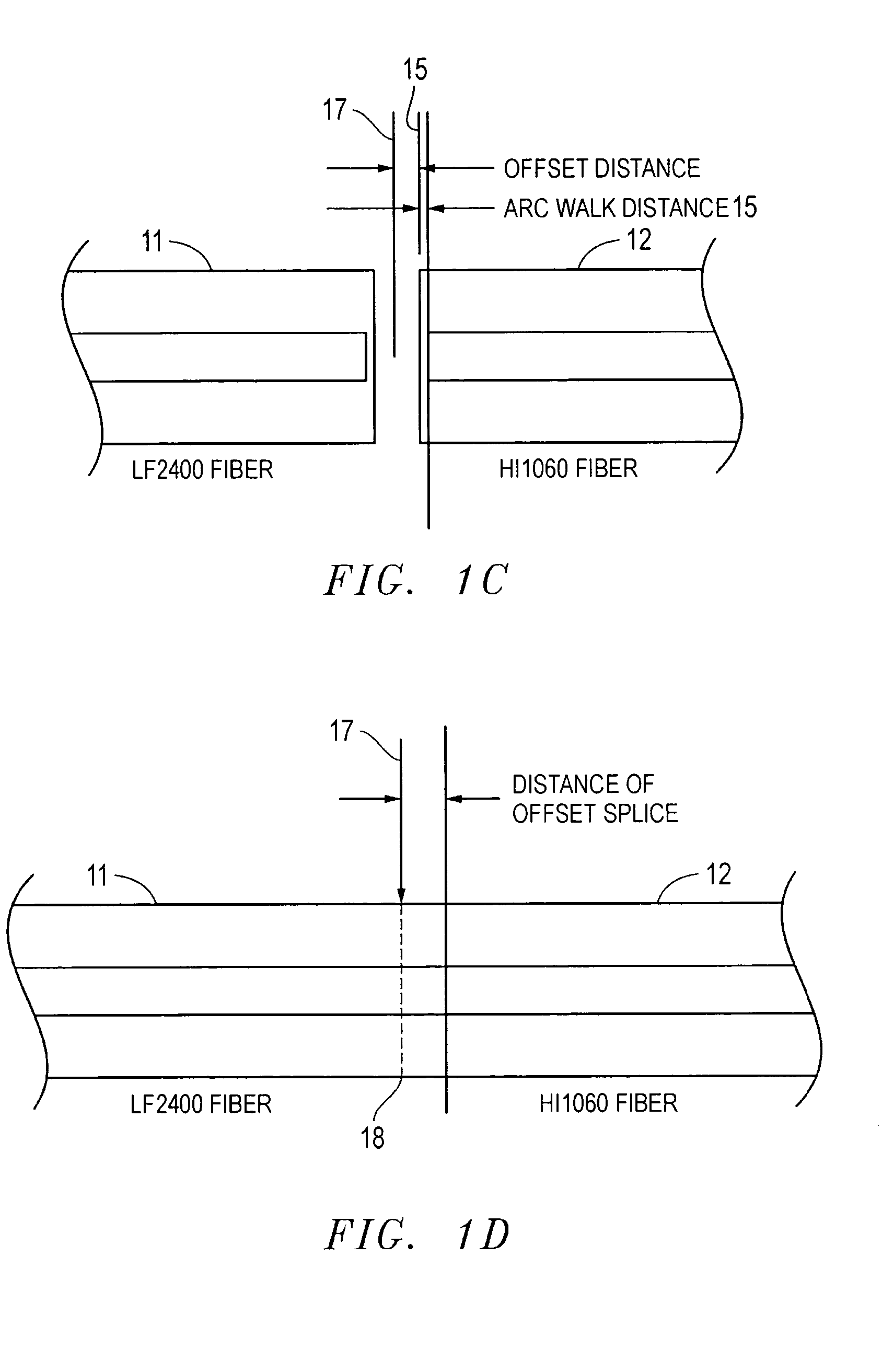Fusion splicing of highly rare-earth-doped optical fibers
a technology of optical fibers and fusion splicing, which is applied in the field of communication systems, can solve the problems of high splice loss of hred fibers, high splice loss when spliced with dissimilar fibers, and deter the use of hred fibers, and achieve the effects of accurate determination, low splice loss, and high splice loss
- Summary
- Abstract
- Description
- Claims
- Application Information
AI Technical Summary
Benefits of technology
Problems solved by technology
Method used
Image
Examples
case 1
ght is injected from the HRED fiber, and the initial MFD-mismatch of the two fibers is relatively small. A typical example is the fiber combination between Liekki LF2400™ (an HRED fiber with a peak absorption of approximately 40 dB / m and a corresponding MFD of approximately 6 μm @1550 nm) and Corning PureMode™ HI1060 (an NRED fiber with an MFD of approximately 8.5 μm @1550 nm). This combination provides an initial MFD-mismatch of approximately 2.5 μm.
case 2
ght is injected from the NRED fiber, and the initial MFD-mismatch of the two fibers is relatively small. A typical example is the same fiber combination described for Case 1.
case 3
ght is injected from the HRED fiber, and the initial MFD-mismatch of the two fibers is relatively large. A typical example is the fiber combination between Liekki LF2400™ and Corning SMF28™ (an NRED fiber with an MFD of approximately 10.5 μm @1550nm). This combination provides an initial MFD-mismatch of approximately 4.5 μm.
PUM
 Login to View More
Login to View More Abstract
Description
Claims
Application Information
 Login to View More
Login to View More - R&D
- Intellectual Property
- Life Sciences
- Materials
- Tech Scout
- Unparalleled Data Quality
- Higher Quality Content
- 60% Fewer Hallucinations
Browse by: Latest US Patents, China's latest patents, Technical Efficacy Thesaurus, Application Domain, Technology Topic, Popular Technical Reports.
© 2025 PatSnap. All rights reserved.Legal|Privacy policy|Modern Slavery Act Transparency Statement|Sitemap|About US| Contact US: help@patsnap.com



